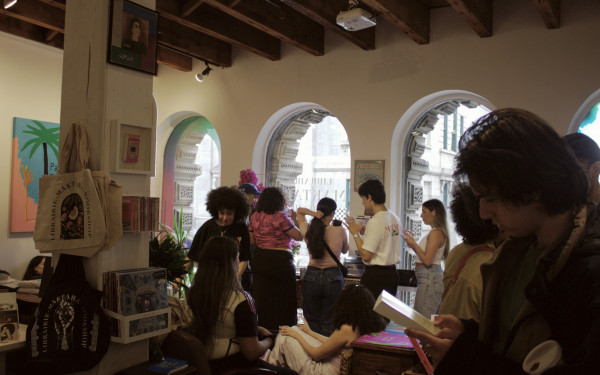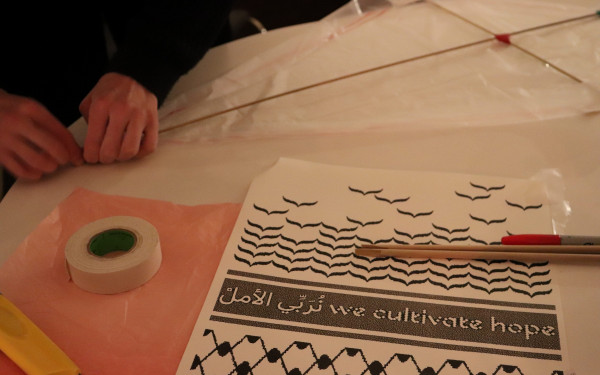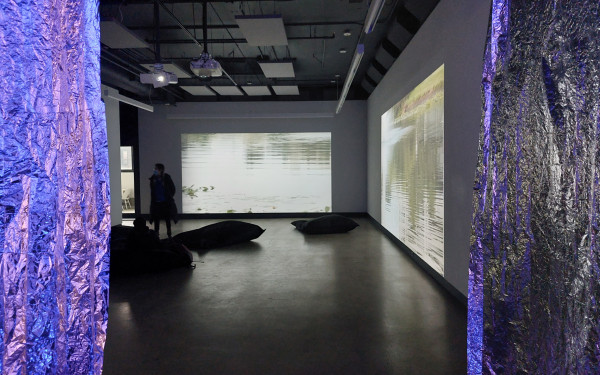Marché Imaginaire makes its debut this fall
Open market serves as an oasis for notable local businesses
Lachine is the borough where Ekaterina Etingin is growing up. “This is my hood,” said the co-owner of Music Capricorne, a record store located on 10th Ave.
At a sunny corner on Notre-Dame St. on Sept. 12, masked locals swarmed the square for Marché Imaginaire’s first edition—to find deals on both old and brand new products.
The thirteen-year-old and her father, Sergey Etingin, set up a table stacked boxes upon boxes with an assortment of musicians and genres to ponder over, one captured and preserved for every decade.
Ekaterina has been helping her parents maintain the vinyl store since she was five years old, and Sergey, doing the same since he was 14 years old, still bets on time for their enterprise. It’s not just for the sales he said, but “to discover new music, to see people and to talk with them about music.”
Record store sales have plummeted for many shops like Music Capricorne, but its doors remain open for business despite everything, “surviving,” Sergey said.
It wasn’t difficult bringing together the artists, printers, music enthusiasts, and business owners, according to Michaël Bardier who is part of the nonprofit project, Association Centre-Ville Lachine. He was offered a position with the local nonprofit, helping transform the borough through live events, animation and security.
“I wanted to bring that sense of community here, and have a space for younger people who are interested in art and music in general to gather around a single event,” Bardier said, having just moved into the neighbourhood six months ago with his family.
Bardier began Marché Imaginaire as a way to gather people in Lachine. “There’s not much happening here, especially due to COVID, but also in general.”
A few tables down, intricately sliced magazines titled Grilled Cheese were towered on display. Children flipped through puzzles and skimmed cut-out pages. In addition to French and English content, the upcoming magazines will contain stories in Inuktitut and Indigenous art, according to Julien Boisseau and Catherine Ouellet Cummings. They own a crafts studio in their basement, where they print the educational magazines designed for readers ranging from two to 10 years old.
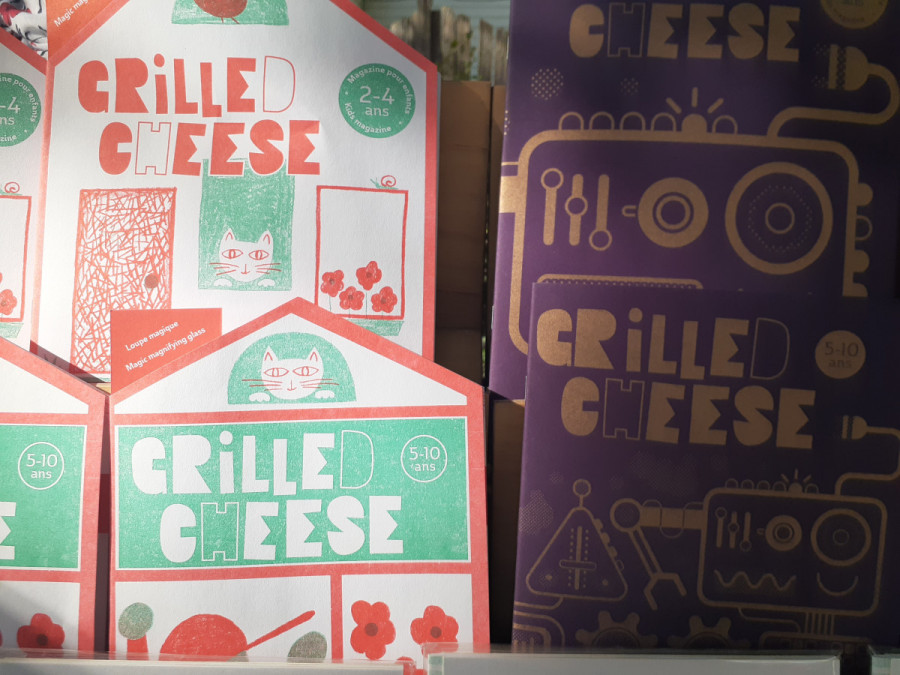
Boisseau said they had already received financial support from Nunavik, allowing them to print and distribute copies to schools across the northern Quebec province.
Vancouver Island-born muralist, Caitlin McDonagh, sat at another table, displaying her folklore-inspired illustrations and mythic clay pins and ornaments to be sold individually. “It is kind of a universal way of recognizing imagery,” she said, explaining her inspiration.
“Montreal has so many different art communities mixing together,” she said. “So the street art, the graffiti, mural community is really diverse, and the fine art is also a whole other community that’s mixed in.”
McDonagh finds it refreshing as a muralist having been in Montreal for three years so far. “There are so many art spaces and tons of people doing cool things,” she said.
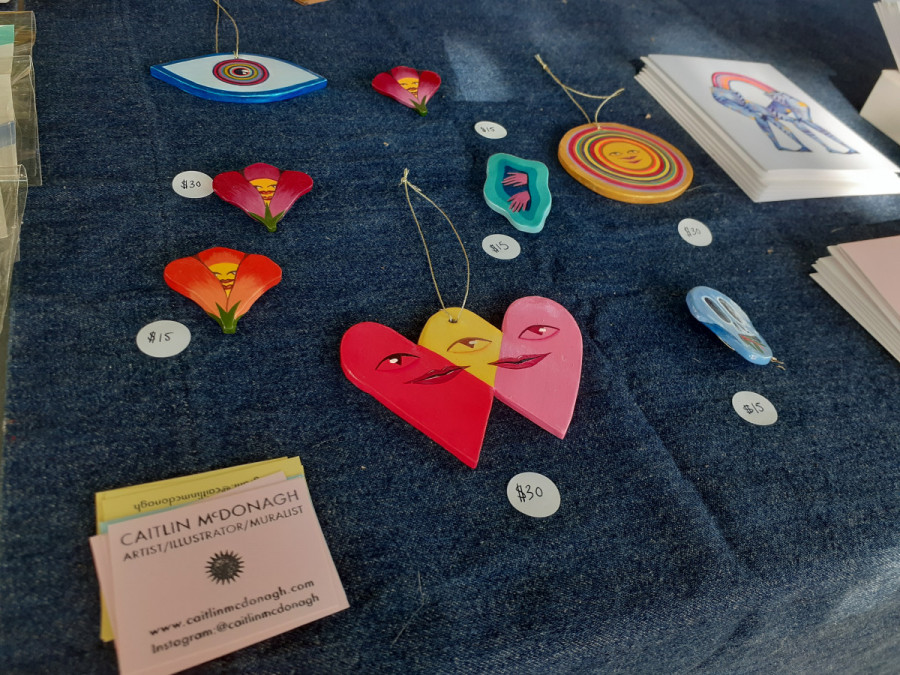
Bardier applies a proactive approach when organizing and recruiting for community events. He tries to get involved with a variety of projects even though he does not work for the city or get paid to do all that he does.
“I think the area has so much potential. We just need to put on events,” he said. “That’s the plan. That’s what I’m trying to do here.”
“I wanted to bring that sense of community here, and have a space for younger people who are interested in art and music in general to gather around a single event.”
— Michaël Bardier
Sonia Staali had prepared her station for the “souk,” which she said was the North-African term for market. She is the owner of Binetna, an e-commerce boutique that sells the handmade works and creations of North-African and Middle-Eastern artists and designers.
Staali’s table displayed an array of embroidered jewelry, mainly earrings and necklaces, and everyday household items, like candles, scarves, bars of soap. There were also kitchen spices blended by chefs from the Syrian-Canadian catering business Les Filles Fattoush, a company that hires Syrian refugee women; and Moroccan-style art deco house slippers made in collaboration with artisans in Barat, Morocco’s capital.
After graduating from communications at the University of Montreal, Staali spent two months in Tunisia and another two in Morocco where she got to know a variety of artisanal handicraft scenes. “I wanted to find a way with the project to value this art,” she said, “to preserve the traditional know-how.”
In her online boutique, she is able to write-up and share—in blog format—interviews with the artists, providing their stories in depth for each product being sold.
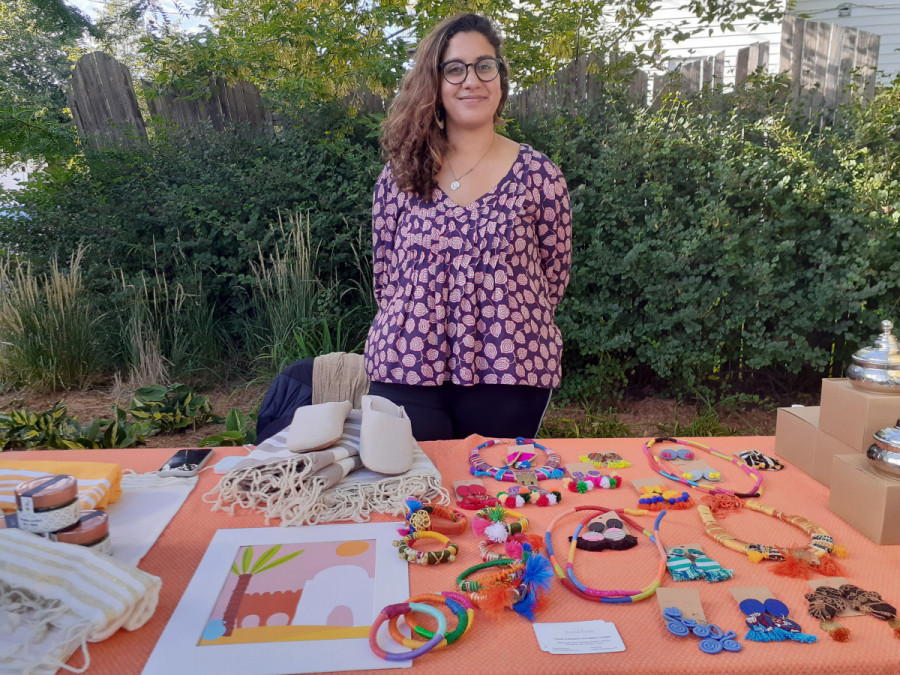
The earrings, for example, were made by Amira de Liloumisou. “She made the jewelry out of recycled fabric,” explained Staali. “So each piece is very unique.”
“We can share each other’s knowledge,” she added. “I love the exchange.”
Staali aspires to buy a space one day and is planning a pop-up event called a mini-souk, “we try to incorporate work-shops within the mini-souk,” she said.
Dans Ma Bulle’s minimally organized table sold vegan and biodegradable soaps, bath salts, lip balms, body butters, and cleansing oils in line with owner Miriam Paré’s business ethics and values. She makes sure that she herself trusts her products, incorporating them into her daily skin care routine as well. “Selling something that is healthy for you, for the environment, and makes you feel good,” she stated.
“The bath salts, I use for my anxiety,” she said pointing to one mason-jar full of lavender infused bath salts. “It’s one of the tools that I use to reduce my stress.”
She had the idea for Dans Ma Bulle when she was a teen attending Collège Sainte-Anne, where she did a team project for a math class in which they had to come up with their own logo. She started making soaps when she was 16-years-old, and the idea for Dans Ma Bulle evolved into her adulthood.
Louis Guillemette’s slogan for his business—Sweet Lou’s Magasin Général—refers to “Jack of all trades, master of none.” The band member of Solids, which was also recruited and managed by Bardier’s agency Heavy Trip, does not like to be tied to any particular métier.
Guillemette does mostly printing, “silk screening: the art of printing on paper, textile with a mesh,” he explained. “I work with a lot of different artists and a bunch of friends too, it’s a bit of everything,” he said about his e-store. “There’s skateboards, totes, pins and patches.”
At another table, the story behind the band tee start-up, Les Roches Qui Roulent, is very Montreal. It was borne out of a conversation between native French speakers and Anglophones. “We were translating band names from English to French,” said designer Julien Bakvis. He also noted, “it sounds weird in French.”
“I thought it would be cool to make really messy designs to go with the sloppy translations,” said fellow designer Melissa DiMenna.
They began an Etsy shop two years ago, selling t-shirts that have scribbly illustrations of famous band iconography printed on them with the French translation to match, Jeunesse Sonique for Sonic Youth, Têtes Parlantes for Talking Heads, and of course the name-sake, Les Roches Qui Roulent, which translates to The Rolling Stones.
Bardier is looking forward to more events that will help animate and revitalize Lachine. “We just need to let people know that,” he said. “We have the waterfront, Parc René-Lévesque, that’s just incredible.”
“I wanted to bring that sense of community,” continued Bardier. “It’s a bit complicated, but there’s an older generation here, who are born here and who are really attached to the historic aspect of the neighbourhood.”
“In my opinion, it is very important,” he said, “but it’s also very important to look [at] what’s next.”

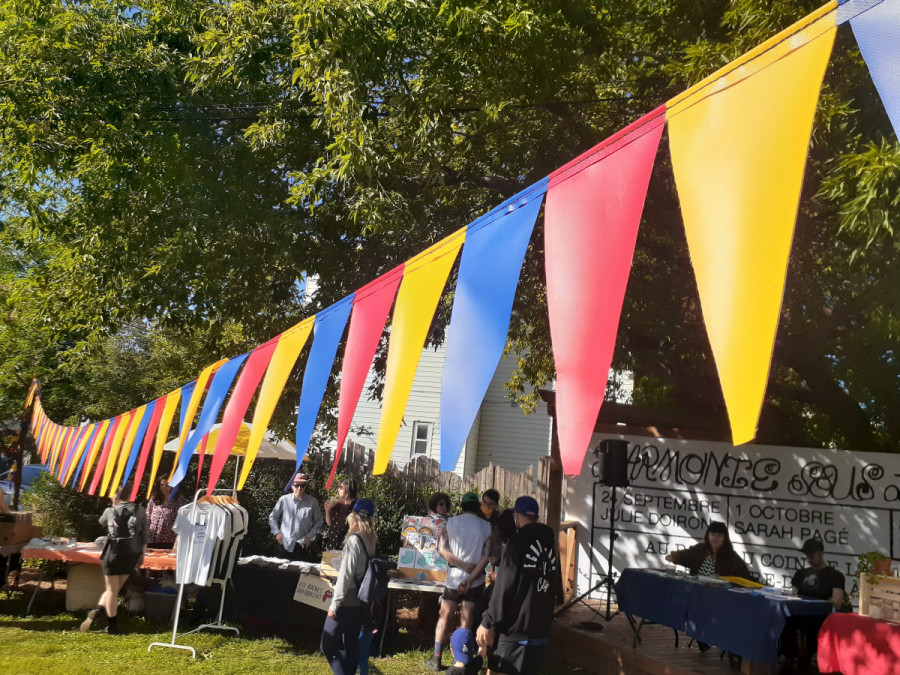
_600_832_s.png)

